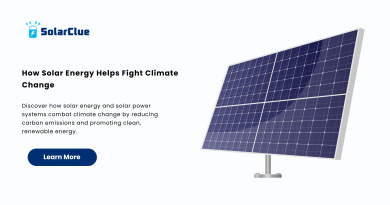Solar Park Scheme
In the pursuit of harnessing clean and sustainable energy, India embarked on a transformative journey with the initiation of the “Development of Solar Parks and Ultra-Mega Solar Power Projects” scheme in December 2014. Conceived by the Ministry of New & Renewable Energy, this visionary program aimed to address challenges associated with scattered solar power project development, ultimately streamlining the process and accelerating the growth of solar energy in the country.
Table of Contents
Objective of Solar Park Scheme
The primary goal of the Solar Park Scheme is to facilitate solar project developers in establishing solar power projects more efficiently. The conventional approach of setting up individual projects across the country has proven to be cost-ineffective, leading to higher project costs per megawatt (MW) and increased transmission losses. By providing a framework for the creation of Solar Parks, the scheme seeks to overcome these challenges and expedite the development of solar projects.
Period and Capacity
Launched with a five-year plan spanning from 2014-15 to 2019-20, the scheme set out to establish at least 25 Solar Parks and Ultra Mega Solar Power Projects, targeting a cumulative installed capacity of 20,000 MW. Recognizing the success and potential impact of the scheme, the capacity was later enhanced to an ambitious 40,000 MW by March 2017. The timeline for achieving this milestone extends until 2025-26.
Salient Features
Solar Park Infrastructure: A solar park represents a significant expanse of land equipped with common infrastructure facilities, including transmission infrastructure, roads, water supply, drainage systems, and communication networks, along with all necessary statutory clearances. This pre-developed infrastructure allows solar project developers to set up their projects seamlessly.
Collaborative Development: Solar Parks are developed in collaboration with State Governments, their agencies, Central Public Sector Undertakings (CPSUs), and private entrepreneurs. The implementing agency, referred to as the Solar Power Park Developer (SPPD), plays a crucial role in the successful execution of the scheme.
Capacity Criteria: The Solar Parks established under this scheme have a minimum capacity of 500 MW, ensuring a significant scale of electricity generation. However, the scheme also accommodates smaller parks in challenging terrains or areas facing a shortage of non-agricultural land.
Eligibility for States/UTs: All States and Union Territories are eligible to benefit from the scheme, promoting widespread adoption of solar energy infrastructure across the country.
Modes for Selection of SPPDs
The selection of Solar Power Park Developers (SPPDs) is facilitated through eight distinct modes, offering flexibility and inclusivity in engaging various stakeholders. The diverse modes cater to different scenarios, ensuring that the scheme adapts to the varied needs and conditions prevalent across states and regions.
Central Financial Assistance (CFA) Pattern
Financial support is a crucial component of the Solar Park Scheme. The Ministry provides Central Financial Assistance (CFA) of up to Rs. 25 lakh per solar park for the preparation of Detailed Project Reports (DPR). Additionally, a CFA of up to Rs. 20.00 lakh per MW or 30% of the project cost, including grid-connectivity costs, is provided upon achieving specified milestones outlined in the scheme.
Conclusion
India’s commitment to fostering clean and sustainable energy solutions is exemplified by the Solar Park Scheme and Ultra-Mega Solar Power Projects. By providing a holistic framework, streamlining processes, and offering financial support, the scheme accelerates the transition towards a solar-powered future, contributing to India’s energy security and environmental sustainability. As the nation progresses towards achieving its renewable energy goals, the Solar Park Scheme stands as a beacon of innovation and collaboration in the pursuit of a greener tomorrow.



